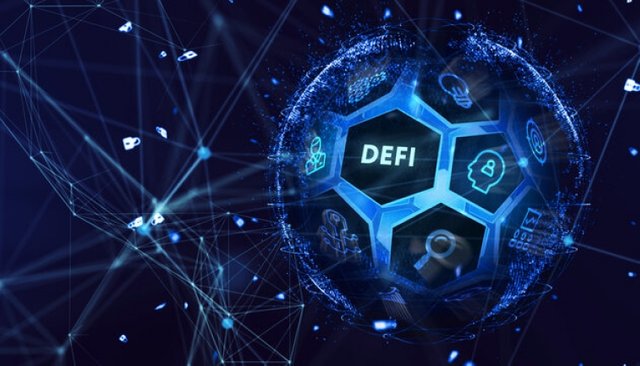
In the fast-evolving landscape of finance, decentralized finance, or DeFi, has emerged as a revolutionary force, promising to reshape the way we interact with and manage our assets. One of the key components driving the DeFi movement is the development of decentralized exchange platforms. In this comprehensive guide, we will explore the concept of decentralized finance, the significance of DEX platforms, and provide a step-by-step approach to developing a DeFi exchange platform, paving the way for users to unlock financial freedom.
Understanding Decentralized Finance (DeFi)
Decentralized finance, or DeFi, refers to a set of financial services and applications built on blockchain technology, eliminating the need for traditional intermediaries like banks. This new paradigm enables users to access financial services such as lending, borrowing, trading, and earning interest in a trustless and permissionless environment. DeFi leverages smart contracts, which are self-executing contracts with the terms of the agreement directly written into code.
The Significance of Decentralized Exchange (DEX) Platforms
At the heart of the DeFi ecosystem are decentralized exchange platforms, commonly known as DEXs. These platforms facilitate the trading of digital assets without the need for a central authority. Unlike traditional centralized exchanges, DEXs allow users to retain control of their private keys, providing enhanced security and reducing the risk of hacking. Additionally, DEXs contribute to the overall decentralization of the financial system by enabling peer-to-peer transactions.
Key Features of a DeFi Exchange Platform
Security: Security is paramount in the world of decentralized finance. Implementing robust security measures, such as two-factor authentication, cold wallet storage, and smart contract audits, ensures the safety of user funds and builds trust within the community.
Liquidity: Liquidity is essential for a thriving exchange platform. Strategies such as liquidity pools, which incentivize users to provide liquidity by offering rewards, help maintain a healthy trading environment.
User-Friendly Interface: A user-friendly interface is crucial for mass adoption. Designing an intuitive and easy-to-navigate platform encourages users to explore and engage with the various features offered by the DeFi exchange.
Interoperability: DeFi is a diverse ecosystem with various blockchain networks. Ensuring interoperability with multiple blockchain platforms enhances the reach and accessibility of the exchange, allowing users to trade assets from different blockchain networks.
Decentralized Identity (DID): Integrating decentralized identity solutions enhances user privacy and security. DID enables users to have control over their identity information, reducing the reliance on centralized identity providers.
Step-by-Step Guide to DeFi Exchange Platform Development
Define the Scope and Objectives:
Clearly define the scope of your DeFi exchange platform. Identify the specific features, target audience, and unique selling points that set your platform apart.
Choose the Blockchain Platform:
Select a blockchain platform that aligns with your project's goals. Ethereum is a popular choice for DeFi projects, but other platforms like Binance Smart Chain and Solana offer alternatives with different advantages.
Smart Contract Development:
Develop and deploy smart contracts to facilitate the trading and management of assets on the blockchain. Ensure rigorous testing and auditing to minimize the risk of vulnerabilities.
Integrate Wallet Solutions:
Enable users to interact with your DeFi exchange using blockchain wallets. Integration with popular wallets such as MetaMask or Trust Wallet enhances user convenience and accessibility.
Implement a Liquidity Pool:
Design and implement a liquidity pool to ensure sufficient liquidity for trading pairs. Incentivize liquidity providers with token rewards to attract and retain participants.
User Interface Development:
Create an intuitive and visually appealing user interface that simplifies the trading experience. Consider user feedback and iterate on the design to enhance usability.
Security Measures:
Implement robust security measures to protect user funds and data. Regularly conduct security audits and stay updated on best practices in blockchain security.
Interoperability:
Enable cross-chain compatibility to expand the range of tradable assets. Interoperability allows users to trade assets from different blockchain networks seamlessly.
Decentralized Identity Integration:
Enhance user privacy and security by integrating decentralized identity solutions. Explore options like self-sovereign identity and decentralized authentication protocols.
Compliance and Regulation:
Understand and comply with the regulatory requirements in the jurisdictions where your platform operates. Implement necessary KYC (Know Your Customer) and AML (Anti-Money Laundering) procedures.
Conclusion
Developing a DeFi exchange platform is a complex yet rewarding endeavor that contributes to the ongoing evolution of decentralized finance. By embracing the principles of security, decentralization, and user empowerment, your platform can become a catalyst for unlocking financial freedom. As the DeFi ecosystem continues to mature, the development of innovative and user-friendly exchange platforms will play a crucial role in shaping the future of finance—one that is inclusive, transparent, and accessible to all.